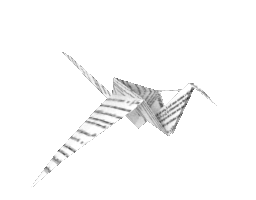All papers authored by Matthias Driess

Refreshing results…





2020
Michaela König,
Massimo Rigo,
Nicolas Chaoui,
Trung Tran Ngoc,
Trung Tran Ngoc  ,
Jan Dirk Epping,
Johannes Schmidt,
Pradip Pachfule
,
Jan Dirk Epping,
Johannes Schmidt,
Pradip Pachfule  ,
Meng-Yang Ye,
Matthias Trunk,
Johannes F. Teichert
,
Meng-Yang Ye,
Matthias Trunk,
Johannes F. Teichert  ,
Matthias Drieß
,
Matthias Drieß  ,
Arne Thomas
,
Arne Thomas  Download from api.wiley.com
Download from api.wiley.com
 ,
Jan Dirk Epping,
Johannes Schmidt,
Pradip Pachfule
,
Jan Dirk Epping,
Johannes Schmidt,
Pradip Pachfule  ,
Meng-Yang Ye,
Matthias Trunk,
Johannes F. Teichert
,
Meng-Yang Ye,
Matthias Trunk,
Johannes F. Teichert  ,
Matthias Drieß
,
Matthias Drieß  ,
Arne Thomas
,
Arne Thomas  Download from api.wiley.com
Download from api.wiley.com

2019
Phil Preikschas,
Julia Bauer,
Xing Huang,
Shenglai Yao,
Raoul Naumann d'Alnoncourt,
Ralph Kraehnert  ,
Annette Trunschke,
Frank Rosowski,
Matthias Driess
,
Annette Trunschke,
Frank Rosowski,
Matthias Driess  Download from api.wiley.com
Download from api.wiley.com
 ,
Annette Trunschke,
Frank Rosowski,
Matthias Driess
,
Annette Trunschke,
Frank Rosowski,
Matthias Driess  Download from api.wiley.com
Download from api.wiley.com











Alexander Burchert,
Shenglai Yao,
Robert Müller,
Caspar Schattenberg,
Yun Xiong,
Martin Kaupp,
Matthias Driess  Download from onlinelibrary.wiley.com
Download from onlinelibrary.wiley.com
 Download from onlinelibrary.wiley.com
Download from onlinelibrary.wiley.com

Alexander Burchert,
Shenglai Yao,
Robert Müller,
Caspar Schattenberg,
Yun Xiong,
Martin Kaupp,
Matthias Driess  Download from onlinelibrary.wiley.com
Download from onlinelibrary.wiley.com
 Download from onlinelibrary.wiley.com
Download from onlinelibrary.wiley.com

Missing publications? Search for publications with a matching author name.